每日观察:关注英国家庭用户对应用的消费情况(7.24)
1)Opera Software最近发布的首份移动广告报告显示,苹果iOS是Opera广告网络上最占优势的手机操作系统(游戏邦注:其报告结果与Adfonic、inMobi和Millennial Media这三个广告网站调查情况相反,Android在这三者网络流量比iOS更为领先),iOS在其网络流量所占比例将近47%,而Android仅占比24%。
除此之外,iOS在该广告平台所占收益超过61%,CPM为2.49美元。iPhone所占流量最大,但iPad在所有设备中的广告CPM最高(达3.96美元)。Android在该平台所占收益将近27%,eCPM为2.1美元。
Windows Phone在Opera平台所占份额排名最靠后,其eCPM仅为0.2美元,流量仅占比0.8%,收益仅占比0.1%。
从Opera所观察的广告互动对比情况来看,富媒体广告的用户粘性比静态广告更高。例如在点击视频内容的用户中,66%用户会完成与广告的互动,并在下一个屏幕中逗留52秒左右。与照片互动的用户投入时间更长,平均达1分25秒,但点击率相对更低。仅有23%用户点击进入一项Facebook操作活动,并在其中逗留37秒时间。
2)Disney UK最近针对2000名家长的调查结果显示,每5名受访中者就有2人每月在应用程序上的投入高达10英磅,英国用户在应用程序上的年度开销统计达1.32亿英磅。
调查发现有49%受访者愿意为付费应用买单;75%用户与子女共享这些应用,还有三分之一受访者认为应用是家庭生活“必不可少的一部分”。
半数以上家长是应子女要求下载应用程序,并且有56%孩子教其他家庭成员如何使用某款应用。
应用已经成为一种新型玩具,29%家长下载应用给孩子玩,17%家长下载应用作为对孩子的奖励。迪士尼互动传媒EMEA地区总经理Paul Brown表示,《Where’s my Water?》这款迪士尼手机游戏在80多个国家/地区应用商店榜单登顶,它表明家庭娱乐市场的巨大发展潜力。
调查结果还显示,50%家长希望能够设计一款可供全家人使用的应用程序,其中最具人气的应用类型包括:
*游戏(支持率为86%)
*娱乐(支持率为53%)
*音乐(支持率为48%)
3)据techcrunch报道,虽然谷歌尚未透露平板电脑Nexus 7发售一周的销售数据,行业难以评估该设备具体表现,但广告网站Chitika所提供的数据却可显示,Nexus 7在其广告网络的使用率“甚为惊人”,在每100个iPad广告印象中,Nexus 7就可占据0.3个广告印象。
虽然这个数据甚小,但却可表明Nexus正快速追赶Kindle Fire和三星Galaxy Tab等其他Android平板电脑市场份额。
Nexus 7发售仅一周就超过了惠普Touchpad,如果设备供应赶上市场需求,Nexus 7未来数周还可能超越摩托罗拉Xoom和亚马逊Kindle Fire。
但需注意的是,Chitika数据取自使用该公司广告服务的网站,并且仅限于网页浏览器数量,而有些平板电脑的网页浏览器使用率比其他设备更高(这也正是Kindle Fire会落后于Nook和黑莓Playbook的原因),因此这项调查结果并不完全准确。
4)ChangeWave Research最近报告显示,苹果iPhone 5已经成为用户“最期待”的智能手机设备,其用户支持率超过以往任何一款iPhone(游戏邦注:该调查执行于2012年6月,调查样本是4042名北美消费者)。
在打算于未来90天中购买智能手机的用户中,有14%受访者表示自己“很可能”购买iPhone 5;除此之外,还有17%受访者称自己“未来有可能购买iPhone 5”。而在iPhone 4S发售之前,很有意向购买iPhone 4S的用户比例为10%,有可能购买的用户比例则是11.5%。
诺基亚智能手机设备支持率为2%,比3月份上升1个百分点。摩托罗拉设备支持率为4%,比3月份下降2个百分点。HTC和RIM支持率未发生变化,分别是3%和2%。
三星智能手机在用户中的人气也同样高涨,有19%受访者有意在未来90天购买三星设备(三星曾在日前宣布三星S3设备自6月初发售以来销量已达1000万部,韩国联合通讯社报道称该设备每日销量约19万部,有可能在今年底突破4000万部销量)。
但比起苹果iPhone 5,很有意向购买三星Galaxy S3设备的用户比例仅为2%,有可能购买的用户比例仅为7%。
5)据路透社报道,由于用户为等待iPhone 5面世而推迟购买iPhone计划,iPhone第三季度在欧洲和中国(游戏邦注:这是除美国之外最大的两个苹果市场)销量将有所下滑。
报道称苹果第三季度收益预计为372亿美元,股票售价为10.35美元。
在2011年第三季度(在iPhone 4S于10月份发售之前),iPhone销量下降17.1%,结果三星成了该季度全球市场规模最大的智能手机制造商。
不过华尔街分析师预测,如果iPhone 5和iPad Mini的传闻成真,那么苹果在第四季度销量将再度反弹。
6)据Cult of Mac观察发现,苹果于上周发布的iOS 6测试版本不再要求用户下载免费应用时输入密码,并且用户重新下载之前已下载的应用(无论付费还是免费),或者更新这些应用时都无需再次输入密码。
有不少人认为,苹果这种简化操作流程的举措有利于提升应用开发者的IAP销量。(本文为游戏邦/gamerboom.com编译,拒绝任何不保留版权的转载,如需转载请联系:游戏邦)
1)Opera’s First Mobile Ads Report: Rich Media Rules, iPhone Rocks
Ingrid Lunden
Opera Software is probably best known for its mobile browser software for smart and feature phones, but over the last couple of years it’s also been buying up mobile advertising companies to help it monetize those browsers. Today it’s released its first report looking at trends in its ad network — partly, perhaps, to raise the profile of that business, but also to highlight where some of the biggest action may be today on its platform.
There have been a lot of mobile ad reports published — they seem to have replaced the infographic as the primary visual marketing currency — but this one caught my eye, not just because Opera may get bought by Facebook (although hasn’t that rumor gone quiet).
For starters, contrary to what ad networks like Adfonic, inMobi and Millennial Media have shown, in Opera’s report Apple’s iOS is the dominant operating system, rather than Android (the other three have all noted that Android traffic has overtaken that of iOS on their ad networks).
According to Opera’s numbers, iOS makes up nearly 47 percent of traffic on its network, compared to just over 24 percent for Android. It also took up a healthy majority of ad revenues, at over 61 percent, with CPMs at $2.49. Within that, Opera broke out the performance of different devices: the iPhone accounted for more traffic, but iPad tablets had the highest CPMs of all devices/platforms, at $3.96. Opera did not break out Android by device, but overall it noted that it accounted for almost 27 percent of revenues with eCPMs at $2.10.
Windows Phone was the loser in Opera’s rankings. Its eCPMs were only $0.20, with only 0.8 percent of traffic and 0.1 percent of revenues.
Opera’s conclusion is that features on a phone that enable you to interact with ads (strong processing power, cameras on devices, big screens) all contribute to a stronger placement on the list, but it also noted that this wasn’t the issue with Windows Phone — the lack of users was the problem.
The other reason for why numbers may leaning in favor iOS is because of Opera’s own traffic on its browsers — the iOS app is one of the most popular, and iOS users happen to be some of the most engaged when it comes to mobile use. Opera says the data it uses for this report comes from 9,000 global customers and over than 35 billion ad impressions per month, with that resulting traffic bringing $240 million+ in revenue to mobile publishers in 2011 (not 2012).
Another notable point in the report is the correlation it shows between rich media and engagement with ads. That’s partly demonstrated, Opera notes, in the high CPMs for the iPad, which has a bigger screen and a better experience for video and other highy visual formats.
The success of rich media compared to more static interfaces also comes through in time engaged with an ad. Facebook doesn’t get too much of a mention in the report, except to note that it’s comparing poorly at the moment against mediums like photos and video when it comes to ad engagement. Among those users that click through to a video, 66 percent of them will complete the interaction and then spend about 52 seconds dwelling on the next screen. Photo users spent even more time, interestingly, at 1 minute and 25 seconds, although fewer clicked through. Only 23 percent clicked through to a Facebook action, and spent 37 seconds on the site. (That may also partly explain some of Facebook’s own moves to add more media to its site overall.)
Stats like these are having an impact on what advertisers are buying these days. Opera pointed out that generally speaking the trend seems to be among advertisers to use the more enhanced formats compared to standard and expandable banners. These latter two categories have seen shrinking investment over the last six months. Interestingly HTML rich media ads now account for the most ad executions on Opera’s network, taking the top slot from standard ads.(source:techcrunch)
2)Disney: UK families spend around £132m on apps each year
by Zen Terrelonge
Almost half of parents ignore free offerings and pay premium prices.
Family entertainment giant, Disney UK, has surveyed 2,000 parents to find that two in five spend up to £10 on apps each month, generating an estimated annual spend up to £132 million across the country.
The hefty figure perhaps makes it unsurprising that 49 per cent are happy to pay out for premium apps.
75 per cent with app-ready devices share them with children, while more than one-third consider apps to be an ‘integral part’ of family life.
‘Pester power’ plays a large role, as more than half of parents have downloaded an app at their children’s request, and it’s the student that becomes the teacher as 56 per cent of kids train their folks how to use the app.
Apps have seemingly become a new form of toy, with 29 per cent of parent downloading them as a treat, while 17 per cent use the platform as a good behaviour reward, and 16 per cent view the tech as a quality time provider.
Paul Brown, GM of Disney’s interactive media business in EMEA, said: “Swampy, the star of Disney’s ‘Where’s my Water?’ app, hit the top of the download charts in more than 80 countries showing the incredible potential for family entertainment on mobile.
“This research shows that families are choosing apps as a way to engage in immersive entertainment and we will continue to create and expand our range of mobile storybooks, games and comics to meet this growing demand from families.”
Further results show 50 per cent of parents would like to design an app for the whole family to use (take note, developers) while the most popular app types include:
* Games – 86 per cent
* Entertainment – 53 per cent
* Music – 48 per cent(source:mobile-ent)
3)Report: Google’s Nexus 7 Is Already Posting ‘Impressive Usage Figures,’ Could Catch Up With Kindle Fire Soon
Frederic Lardinois
Google’s Nexus 7 tablet is off to such a good start that Google can’t keep up with demand for the 16GB model. The company hasn’t released any sales data yet, so it’s hard to gauge whether Google is selling out because it just grossly underestimated demand and didn’t produce anywhere close to enough devices, or whether the Nexus 7 is really selling at unprecedented levels (for an Android tablet, that is). To get a better grip on how well the Nexus is doing after just over a week on the market, the folks at ad networks Chitika provided us with some data about what they are seeing on their network.
According to Chitika’s engineers, the Nexus 7 is posting “impressive usage figures” across the company’s network. It currently accounts for 0.3 impressions for every 100 iPad impressions. That doesn’t sound like much, but the Nexus is actually on track to quickly catching up with other popular Android tablets like the Kindle Fire and Samsung Galaxy Tab.
As usual, it’s important to note that there are some caveats to this data. It’s limited to the sites that run Chitika’s ads, for example, which could skew the data depending on the sites that are in the company’s network. The data is also limited to web-browsing data and some tablets are obviously more popular for web browsing that others (which could explain why the Kindle Fire is behind the Nook and Blackberry Playbook in these stats). Still, in the absence of other data for the time being, these stats at least provide us with some idea about the Nexus’ momentum.
After just a week then, the Nexus 7 already passed HPs failed Touchpad and could leave Motorola’s Xoom and Amazon’s Kindle Fire behind within the next few weeks once Google catches up with demand.(source:techcrunch)
4)Research: Samsung Has Sold 10M Galaxy S3′s, But ‘iPhone 5′ Still The Most-Wanted Phone
Ingrid Lunden
You know a brand is doing something right when people go a little crazy for its products even before they’ve been announced. A new survey out from 451 Research/ChangeWave on consumer smartphone sentiment found that Apple’s iPhone 5 — whatever that may turn out to be — is seeing an “unprecedented” wave of advance demand — higher than any other iPhone model has had before, with 14 percent of respondents saying they were “very likely” to buy the iPhone 5. In contrast, the S3 from Samsung, got a 2 percent “very likely” response from users planning to buy a smartphone in the next 90 days. The news comes one day after Samsung noted it has passed 10 million in Galaxy S3 devices in the two months since launch in other markets.
Apple is likely to launch a new smartphone later this year, the 451/ChangeWave researchers note, and that will put it in a perfect position to take advantage of what they believe will be a high-water mark for smartphone purchases. Samsung will also reap some benefits, it notes, although that will be proportionate to weaker demand for its brand. The rest of the competitive lineup may not fare so well.
“Overall smartphone sales should spike to an all-time high this fall, and of course Apple is going to be the number one beneficiary,” notes Dr. Paul Carton, 451 / ChangeWave’s VP of Research. “
But besides Apple, and to a lesser degree Samsung, no other manufacturer is likely to benefit from this coming wave of demand.”
Among those other results, overall demand for Nokia is now at 2 percent, up one point from March. Demand for Motorola is now at 4 percent overall, down two percentage points since March. And HTC and RIM were unchanged, respectively at 3 percent and 2 percent — with the latter “all-time low” for RIM.
ChangeWave’s survey canvassed opinion from 4,042 mainly North American buyers in June 2012. In addition to finding that 14 percent of consumers said they were “very likely” to buy an iPhone 5, a further 17 percent said they were “somewhat likely to buy it in the future. As a point of comparison, when the same questions were asked about the iPhone 4s before it launched, 10 percent said they were very likely; and 11.5 percent said they were somewhat likely to buy it. And that’s for a device that is now “considered the most successful smart phone release in history,” Carton notes. The numbers for those “unlikely” to buy the device also went down:
What’s interesting is that ChangeWave doesn’t take into account that before the iPhone 4S launched, many thought it would be the fabled iPhone 5 — when in reality it physically looked exactly the same as the iPhone 4, and had much of the same functionality — with one notable exception being the addition of the Siri voice assistant. So what we may be seeing here is an increased, pent-up demand from people who have actually held off from buying the iPhone 4S in anticipation of a major update and upgrade.
But that’s not to say that Samsung is not doing very well, too. ChangeWave notes that in fact it has been seeing a four-fold surge in demand for Samsung since March — at a time when Android competitors like HTC and Motorola have been more challenged.
ChangeWave puts Samsung’s recent rise down to positive reactions to the S3, which features a bigger screen, more processing power, a better camera and 4G capabilities.
That popularity was spelled out yesterday by Shin Jong-kyun, president of Samsung’s information technology and mobile communication division, who yesterday told reporters that the S3 had passed the 10-million sales mark since launching at the beginning of June. The Yonhap news agency, which quoted Shin, worked this out to sales of 190,000 daily, with sales potentially reaching 40 million by the end of the year.
Still, even with that momentum, it’s not registering at the same level of hype as Apple’s iPhone 5, as evidenced by these two comparative charts that measure “advance” demand for both devices.
A key difference here, which should be noted, is that while Apple has yet to any anything official on its next iPhone, the Samsung Galaxy S3 was launched months ago, and so people who are being canvassed would have already known more about what the device had (or didn’t have) when responding — even if the phone had yet to hit the market. In the case of the iPhone 5, ChangeWave says that it presented respondents with a description of “probable” features for the device.
Those included a larger screen, better camera, new OS and 4G capability.
Both the Galaxy S3 and the iPhone 5 will likely be sold at the same price points — currently the S3 goes for $199 for the 16GB model on a two-year contract.(source:techcrunch)
5)Apple sales to dip as consumers wait for iPhone 5
by Zen Terrelonge
Analysts believe forecasts will be missed as neophile consumers delay spending till October.
Apple consumers are the most loyal breed on the mobile market, but increasingly hot chatter of an iPhone 5 is slowing demand.
The next fiscals are due this week, and Wall Street is not getting too excited. Reuters reports that iPhone sales figures are set to drop in Q3 across Europe and China, the firm’s two largest markets beyond its native US.
Apple is expected to report fiscal third-quarter earnings of $10.35 a share on revenue of $37.2 billion, according to Thomson Reuters I/B/E/S. And the analyst thinks Apple may miss the average sales forecast by about 0.2 per cent
It would be a case of history repeating itself, as iPhone sales dipped 17.1 per cent in Q3 2011 (ahead of the October 4S release) opening the door for Samsung to become the world’s biggest smartphone maker.
However, WSJ analysts predict a bumper Q4 for Apple, should rumours of the iPhone 5 and iPad Mini prove to be true.(source:mobile-ent)
6)No password needed: iOS 6 gets rid of the barrier for free apps
Meghan Kelly
It seems Apple will no longer require you to put in a password when downloading free apps in its latest mobile operating system, iOS 6.
Cult of Mac noticed the change today, a week after Apple released the latest version of iOS 6 to developers for bug testing. The blog also notes that Apple has been loosening up on other areas where passwords once provided a boundary. In iOS 6 you will no longer have to enter a password to download apps (paid or free) that have previously been downloaded, or for updates to those apps.
The practice of entering a password to download a free application seems unnecessary. Entering your password generally signals the act of giving the App Store permission to access your payment information. But it does keep kids from downloading tons of apps to their parents’ phones. Apple is undoubtedly, however, catering to those responsible downloaders who appreciate the extra ease of getting desired content.
It’s Apple ability to make downloading such a simple process that makes iOS users so valuable to developers. Many praise Apple for the one-click check-out, saying it helps with in-app purchase sales.
When the latest iOS 6 build, which includes this latest development, was originally released, the most obvious changes were to Apple’s new maps application. New features included the ability to switch between miles and kilometers, traffic and construction alerts, more 3D-imaging, and the ability to control the GPS voice navigator volume and the language in which directions are dictated.
Developers also noticed “answer” and “decline” buttons for FaceTime calls. Those with a developer account will be able to see these news features in Build 10A5355d. Developer accounts are sold by Apple for $99 an account.(source:venturebeat)


























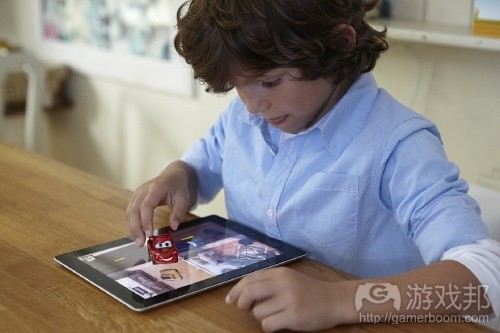
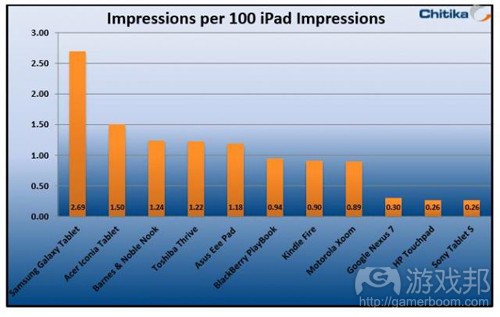
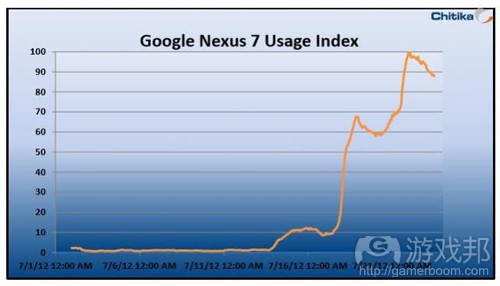
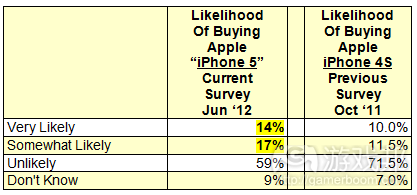


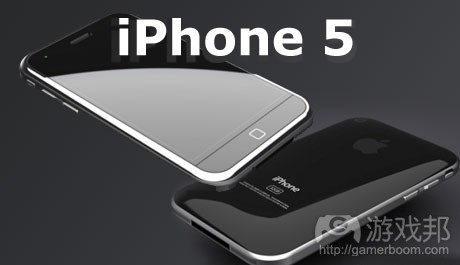
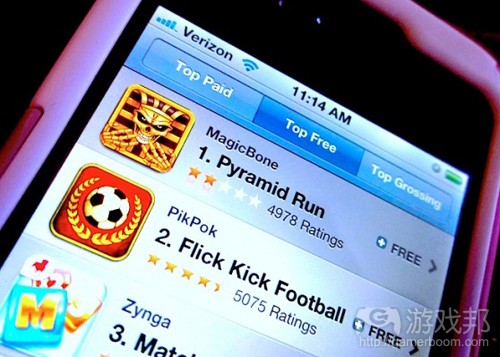














 闽公网安备35020302001549号
闽公网安备35020302001549号